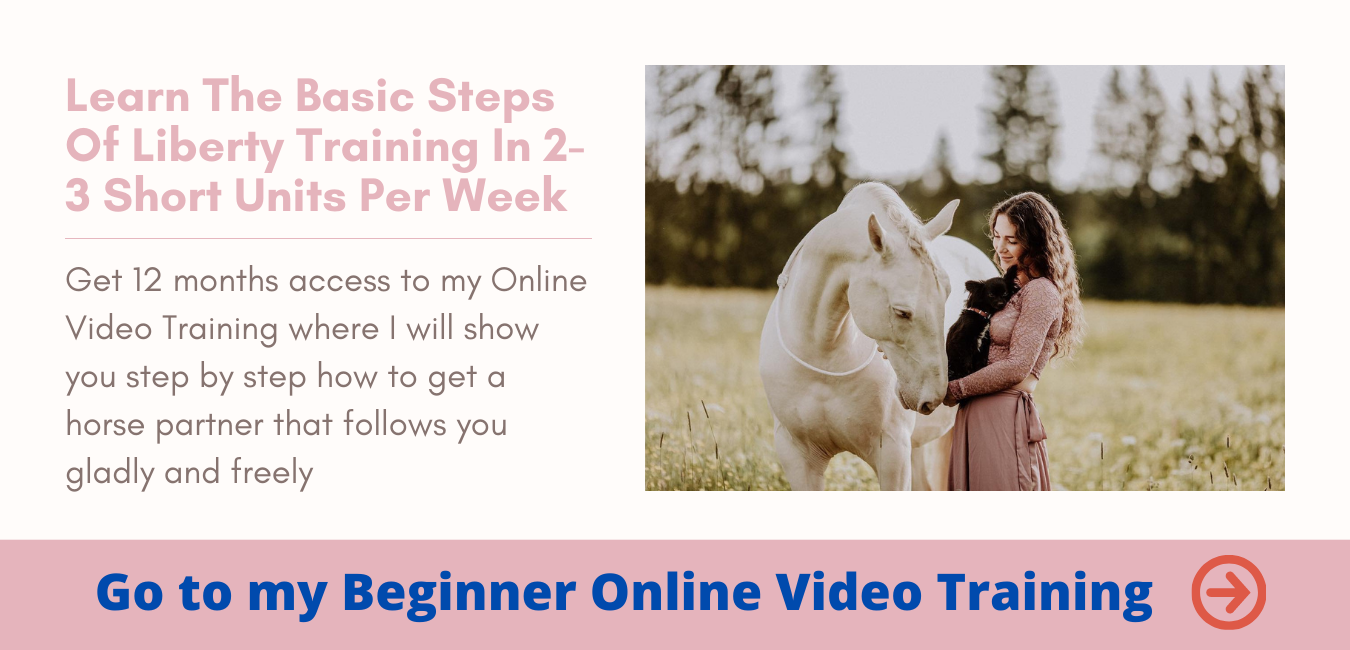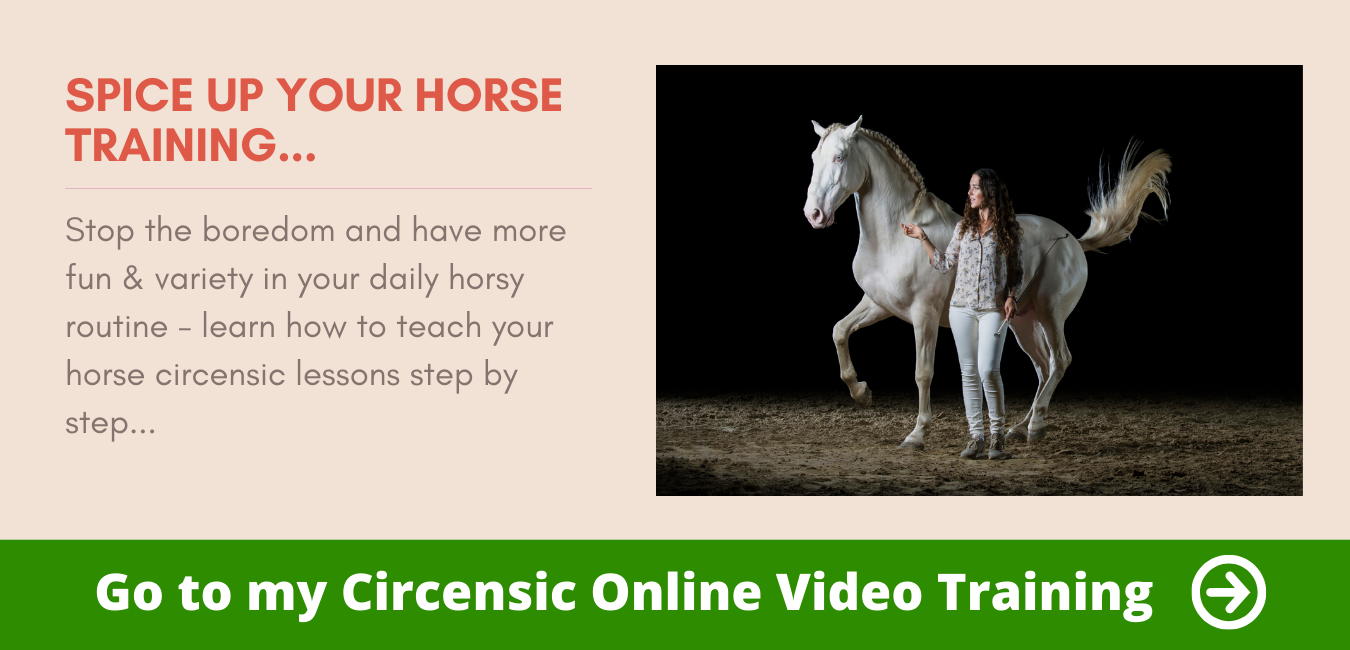Today I would like to write for those of you whose relationship with your horse is currently anything but harmonious.
This does not necessarily mean that you get along badly with each other:
It is rather about YOUR bad feeling when you are together with your horse.
No matter how it came about.
I would like to talk to you today about the fact that fear of your horse is nothing to be ashamed of. In fact, it is quite widespread.
And I too have had one or two accidents after I found the lightness more difficult than before.
What I want to say with this: Nobody is immune from this unpleasant, nervous tingling in the stomach, no matter how much horse experience they have.
The root of all trouble
In order to be able to overcome your fear successfully, the first thing you need to do is to find out when and how your fear arose.
Because it makes a huge difference whether you are afraid at any moment that your horse might bump you or whether you only have an uncomfortable feeling in certain situations (e.g. galloping in the country, scratching out your back hooves, going for a walk when a tractor comes etc.).
Once you have found out whether it is a specific or a general “problem”, you can ask yourself if you think you can correct this “problem” yourself.
Ask yourself whether you feel up to the situation – despite your fear – or whether you are making the situation more complicated by getting further and further into the fear with your horse.
Such situations unfortunately end far too often in a vicious circle:
You get nervous, your horse senses this and becomes nervous in turn, whereupon you become even more nervous.
Your horse must be able to rely on you in every situation as a herd animal and as an escape animal – otherwise it might take over the lead itself.
There is nothing wrong with admitting to yourself that you are no longer up to your “problem”.
There are so many good, patient horse trainers who are happy to support you and your horse to find a relaxed and harmonious relationship again.
Because everyone is capable of learning: Your horse just like you.
And that also means that you can resolve any situation – if you let us help you as soon as the “problem” gets out of your head.
Fear: A vicious circle
You may have asked yourself why many situations get worse from time to time and don’t relax. As bad as it sounds at first sight:
The reason for this is mostly up to you.
But there is also a lot of potential in it!
Because you have the power to change the course of your problem. Your blockage is here in most cases your thoughts.
Especially if a problem occurs repeatedly, your mind is responsible for imagining the worst scenarios in advance.
No matter if you see yourself falling off a horse, running around, being kicked or bitten – you will tense up, get nervous and be in anticipation of the explosion.
The problem: Your horse cannot read your thoughts.
He only notices the change in your body language, your shallow breathing and your increased adrenaline level.
But he doesn’t know that this is the trigger for your stress – he “senses danger”. But because it cannot perceive the source of danger that you obviously see, it becomes more and more nervous.
Especially because you don’t relax either, but keep on tensing up.
And already you are caught in a vicious circle, which is “fed” by your thoughts and all the horror scenarios.
It should not come so far at all. And if it does, you should try to break this endless spiral as quickly as possible – whether alone or with a coach.
Mastering your “problem” successfully
Of course it can be impressive when a horse is dominant or good at bucking. The key is usually that you learn to control your body – and your fear. But this is often easier said than done ?
First of all, you should try to create as pleasant experiences as possible that overlay your negative experiences.
This can also mean, for example, that you first gallop on another horse to regain routine and security before you get on your horse from which you fell off at a gallop.
You should also have a strategy for how you react in case of a fall to get the situation under control again. Don’t feed the horror scenario in your head, but make sure that the movie ends well because you have found a solution to your problem!
Of course this solution is always very individual. Nevertheless, I would like to give you two examples how your “new head cinema” can look like.
For example, if your horse has a tendency to walk through, it will help you to create a “battle plan”. By playing through your reaction to a possible runaway in your mind, you can get a routine that will pay off in real life.
Imagine here exactly how, as soon as your horse runs away headless, you stay calm and breathe deeply.
Clinging and wild pulling usually only make the situation worse and often the first panic after 1-3 gallop jumps has already subsided and your horse is “responsive” again.
Think about what makes the most sense for you and your horse.
Easy parries until your horse finally parries through again? A turn to the left or right to slow down the pace? Impulsive corrections until the tempo becomes tradable again? Avoid tightening up and giving in again and again – despite your fear.
In my video I explain once again in detail how you can deal with your fear.
For example, if your horse is rude and regularly threatens to run you over, you need to be clear about your dance area and body language.
[su_youtube url=”https://youtu.be/ljseehaz6fQ”]
Do you perhaps unconsciously retreat at the slightest sign? This would invite your horse to ignore your individual distance.
Work on your presence instead!
This means that you concentrate fully on your horse and are completely “in the moment”. This is the only way you can react to every fine signal from your horse – preferably before a collision occurs.
Many horses ask you several times before they really push you in the end.
This can start with them pushing you with their shoulder or with their nose. Correct even these “slight injuries to your personal space” calmly but firmly.
Often it does not even happen that the horses really go to the limit.
If your horse still comes too close to you, make yourself big and become more impressive.
This can mean that you spread your arms and approach your horse with a confident swing on your part. Don’t try to avoid them, because then your horse will again have a “sense of achievement” and will continue to claim the leading position in the future.
Imagine you are a rock and your horse is a spaghetti.
This will help to reinforce the image and strengthen your presence while you work with your horse.
This also means that your horse should never touch you “just like that”. Because even in a herd, you may only cuddle when invited by the higher-ranking member of the herd.
And no matter if it is crawling or pushing – this attitude helps to strengthen your position as “leader”. It also means that you can also correct your horse if it bumps into you.
Just imagine the pain this big animal can cause you and others if it does not respect your personal space!
You, on the other hand, can hardly inflict pain on your horse by means of an appropriate correction.
Because we always remember: As much as necessary, as little as possible.
Never get emotional! Think of the correction more as a short reflex – just as it would happen in the herd – and then continue working normally and relaxed.
Just imagine that it is quite natural to claim your space for yourself.
Because you only react the way your horse knows it from the herd.
With every “success” where you don’t back away from your horse, you will gain new self-confidence – an even stronger presence – until your reactions are more and more fine-tuned with your horse and your problem is completely solved.
Good things take time…
As so often, the same applies here: Everything takes time. And especially deep-seated fears will not disappear overnight.
Just see it as a chance to develop yourself personally.
Because that is what makes the magic of horses: Their power to hold up a mirror to us and confront us with our greatest fears.
I am convinced that everyone does not get the horse they want, but what they need for their personal development.
Atila, for example, taught me to be really present and to pay attention to the finest signals of the horse – just like my own body language.
Anyone who has read my book knows that my shoulder has also suffered during training. Because with Atila the line between play and aggression is very narrow.
And yet, this horse has brought me personally extremely far! He has given me a clarity in everything I do, from which I profit today also in training with every other horse.
Sasou has also taught me above all patience and calmness. He is very eager and always a bit “over-motivated”.
His willingness not always to accept and in the end overtax him is simply a very exciting aspect that really sets him apart.
So it seems logical that individual lessons like lying down with Sasou took more than a year to be reliably retrieved, doesn’t it?
So rest assured: no matter what kind of horse you have, you will make progress.
Your challenges will always be different and yet I am sure that you can profit from every situation, even if you get support from a trainer.
You will grow together mainly on your problems and not on what has worked well from the beginning.
This way you will gain more and more trust and freedom over time. Trust me ? You can do everything with your horse!
All love,
Your Kenzie




